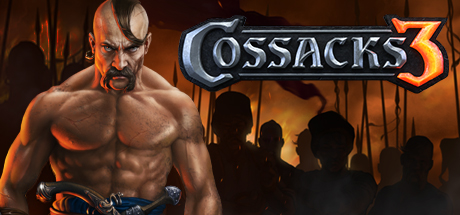Welcome to the world of Cossacks 3! In this guide, we will be taking a closer look at the Austria faction. You’ll learn about their special bonuses, unique units, and their playstyle, along with some interesting historical facts. So, let’s dive in and discover what makes Austria a formidable nation in this game!
Introduction
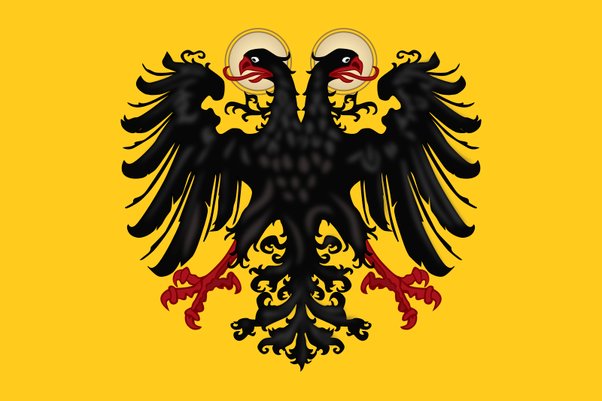
Flag of the Holy Roman Emperors, 1430-1806. While not technically an Austrian flag per se, the black double-headed eagle on a gold background became closely associated with them due the Habsburgs’ monopolization of the emperorship.
Availability: Base game
Focus: Balanced, Armored infantry, Unit variety
Playstyle: European
Fighting to maintain and expand Habsburg dominance in central and eastern Europe, Austria is a balanced nation notable for two things. The first is its plethora of unit choices: Of Austria’s four unique units, three of them are additions to its roster rather than replacements. These combined with their standard European units give Austrian players an unusually large pool of infantry and cavalry to pick from, allowing them to better tailor their armies to the needs of the game.
The second stand-out trait is their focus on heavily armored infantry. Aside from the standard 17c. Pikeman, two of Austria’s unique units also boast built-in protection against gunfire and one of them is arguably the best bullet sponge in the game. This makes Austrian armies more resistant to musket fire than practically any other faction’s, which helps them out in the mid-to-late game when ranged units rule the battlefield
If you like tanky foot soldiers, having lots of different options available, or just want a unique and balanced country that can adapt to just about any game situation, Austria is a great nation for you.
Features
+ Armored 17c. Pikemen
+ Roundshier–fast-training, heavily armored swordsman
+ Croat–tanky fast cavalry available in the 17th century
+ 18c. Musketeer
+ Pandur–cheap, slow-training Musketeer with strong attack
+ Balloon to reveal the map
~ Austrian Musketeer–armored but has low HP and trains slowly
When it comes to buildings and techs, Austria is a very typical European nation. Their only standout trait is that their Town Centers build in less than a third the time of other countries’. This speeds up Austria’s early game by allowing them to start constructing other buildings and producing Peasants and military units sooner. It’s a relatively small buff, but it’s still nice and can give them an early leg up both economically and militarily.
Otherwise, Austria has the same features as a standard European nation. Their complexity comes from their units, not their buildings or tech tree.
Roundshier (17th century)
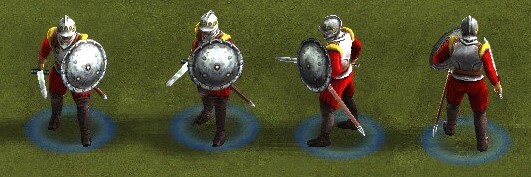
Base stats:
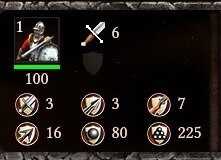
Full upgrades:
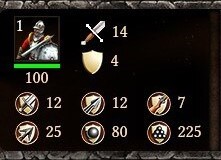
Cost: 20 food, 3 gold, 25 iron
Training time: 4 seconds
+ Trains quickly
+ One of the game’s best bullet sponges
+ Beats 17c. Pikemen in melee through upgrade tiers I-V
+ Cheaper upgrades than 17c. Pikeman
+ Benefits from the armor techs at the Blacksmith and Academy
~ Deals sword damage
– Low attack
– High iron cost
– Loses to 17c. Pikemen from upgrade tier VI onward
The Austrian Roundshier is a stronger version of the ubiquitous Mercenary Roundshier. They can do alright in early melee in battles against 17c. Pikemen at lower upgrade tiers, but their main selling point is their high bullet armor which, combined with their fast training time, makes them the best infantry in the game for tanking gunfire.
Stat-wise, Roundshiers are geared more towards defense than 17c. Pikemen. Their +10 HP and 0.5-second faster training time are both nice, as is their sky-high arrow armor for when you want to bully a Scottish or Algerian player using archers. But what truly stands out is their 11 max bullet armor. That’s more than any other infantry unit in the game and, combined with their extra HP, allows fully upgraded Roundshiers to absorb a lot of gunfire for such a fast-training unit.
Shots to kill (full upgrades)
As you can see, Roundshiers take 8 shots for a normal fully-upgraded Musketeer to kill whereas 17c. Pikemen take 6. This, combined with their faster training time, is what allows late-game Austrian armies to tank more gunfire than those of just about any other faction.
Moving over to melee combat, Roundshiers perform rather differently than any other unit, especially in comparison to 17c. Pikemen.
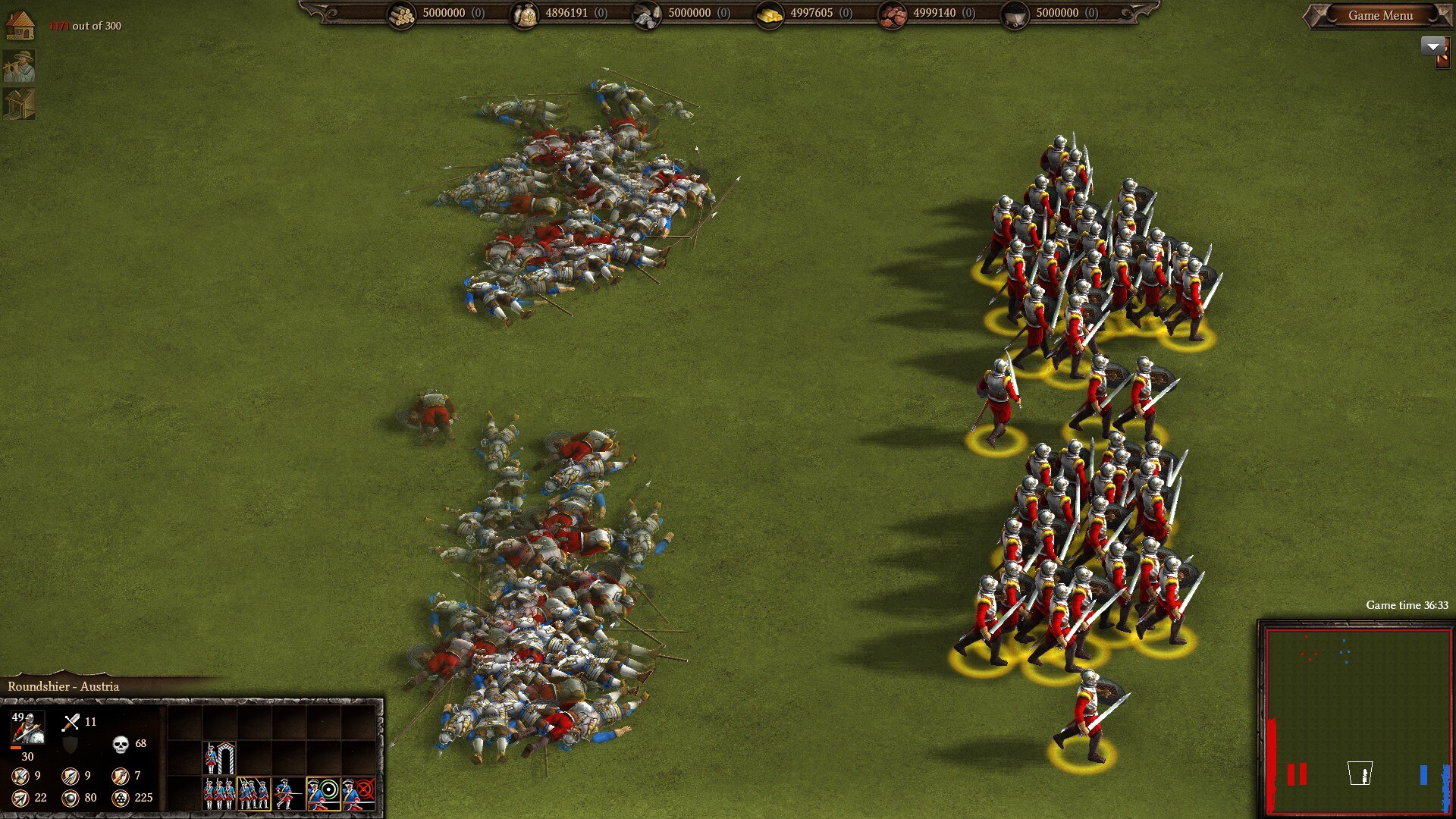
120 Roundshiers at upgrade tier V vs 108 17c. Pikemen, reflecting the difference in training time.
At upgrade tiers I (AKA base stats) through V, Roundshiers will usually beat an equivalent force of 17c. Pikemen in a head-on engagement. However, once both units reach upgrade tier VI…
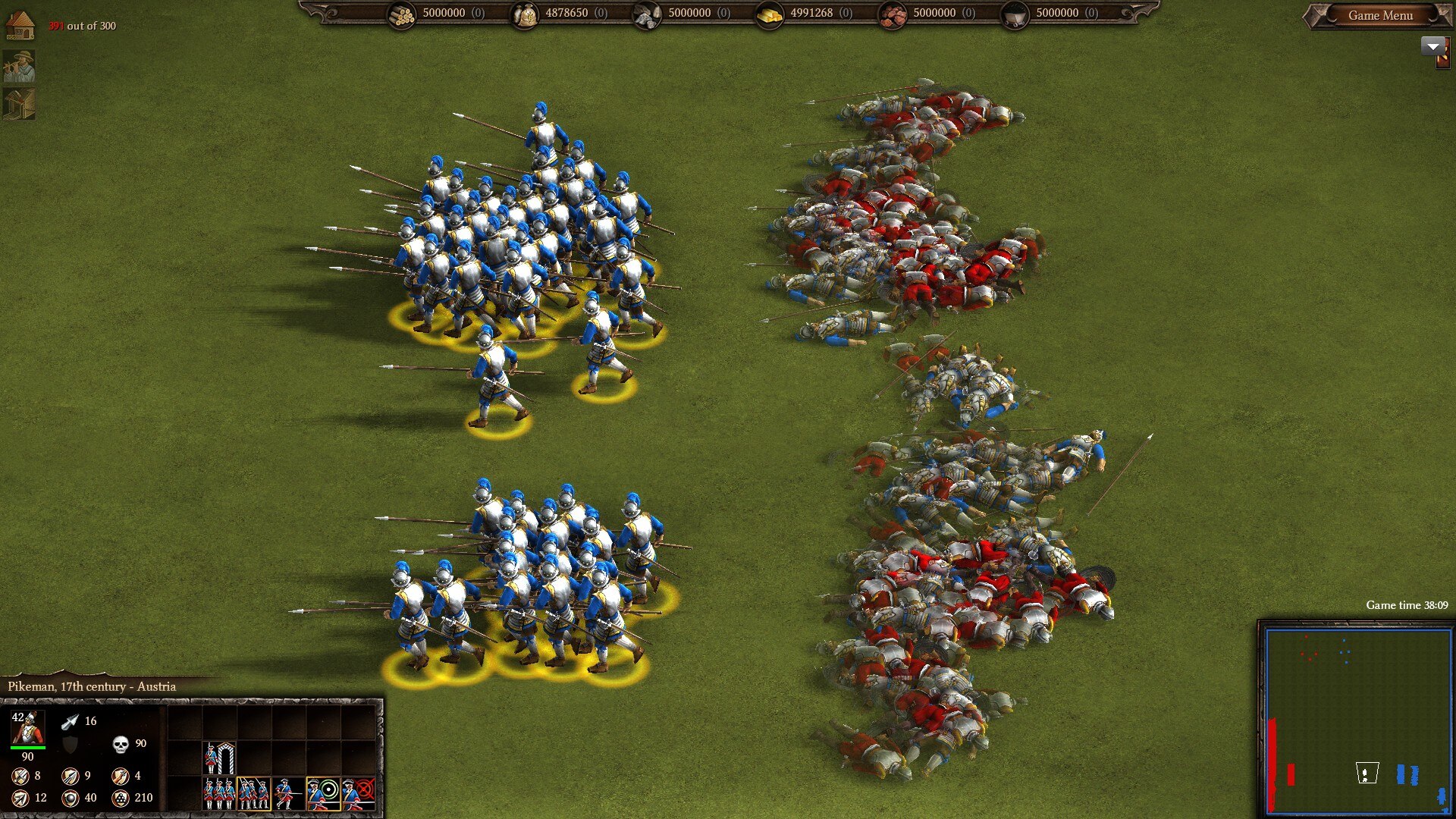
120 Roundshiers at upgrade tier VI vs 108 17c. Pikemen.
…the matchup flips completely, with the Pikemen dominating. This is because tier VI is where the Pikemen’s attack finally outscales the Roundshiers’ pike armor while the Pikemen’s sword armor completely neuters the Roundshiers’ weak attack. From this point on, Roundshiers have no hope of beating 17c. Pikemen in an even fight.
Note also that this dynamic only applies to generic 17c. Pikemen: Stronger units like Spanish Coseletes or Swiss Pikemen will stomp Roundshiers in an even fight regardless of upgrade level. Same goes for Piedmontese 17c. Pikemen when backed up by their Padres; see the Piedmont guide for more on that matchup.
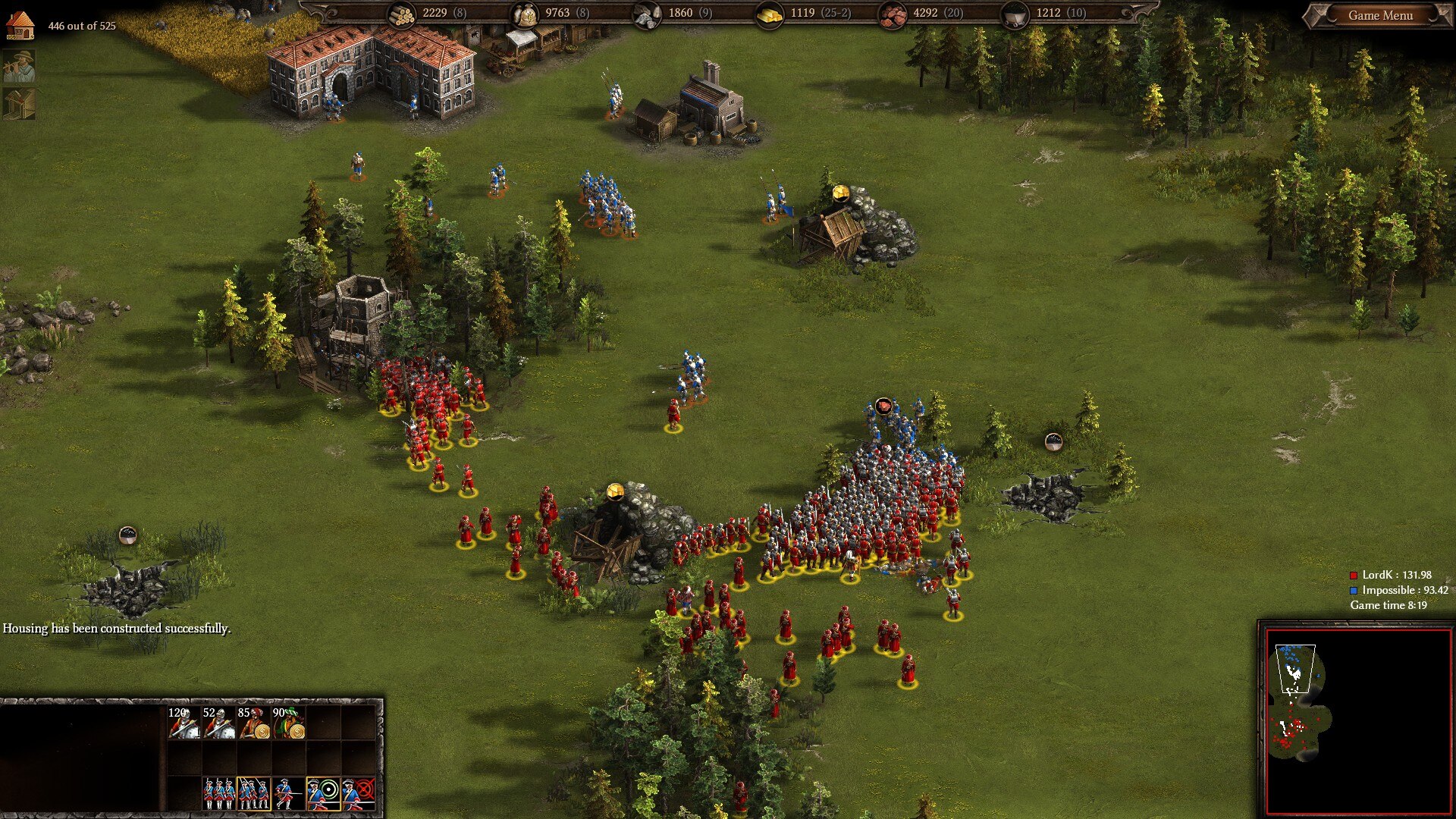
Driving Gustavus into the Baltic: Roundshiers and mercs rush a Swedish base before the 10-minute mark.
All this makes Roundshiers a decent rushing unit in the early 17th century, but only against nations with generic 17c. Pikemen and only so long as said Pikemen haven’t reached tech tier VI. Once that happens, Austria will need to add something else to their army to prevent themselves from being crushed in turn.
In the mid-to-late game, however, Roundshiers start to become good again. With large musketeer armies dominating the battlefield and melee infantry mostly relegated to being blocking troops, Roundshiers’ quick training time and awesome defenses against gunfire get pushed to the fore, making them arguably the finest bullet sponge in the game. Sure, they won’t be killing anything with their pathetic attack, but that’s not their job anymore.
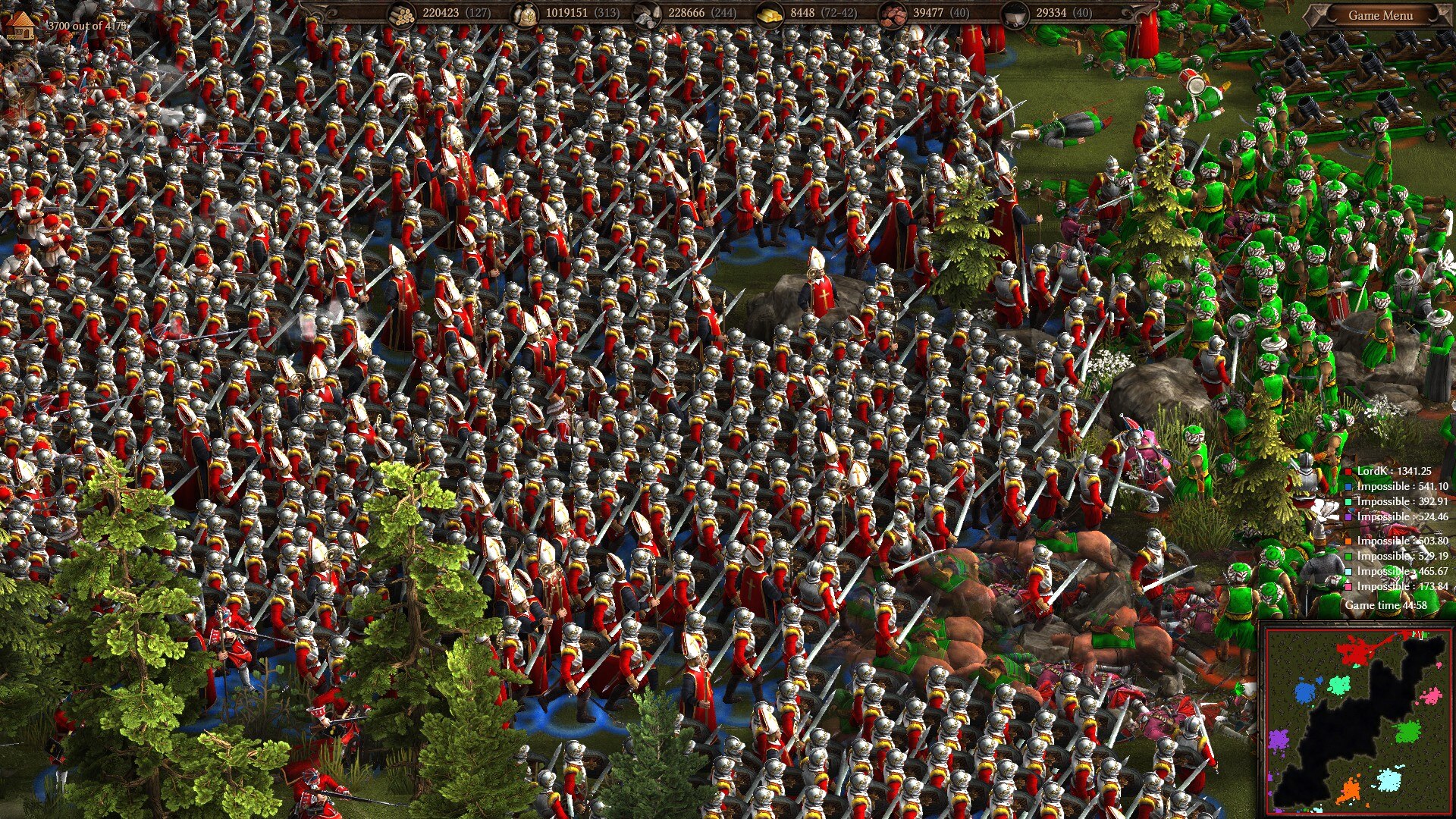
Bulwark against the Turk: Roundshiers advance into battle ahead of their army’s musketeers, shielding them from the enemy’s return fire.
So that’s the Austrian Roundshier; a unit that starts out slightly above average, dips down to below average, then shoots back up to good over the course of a long game. And if that sounds unappealing to you for some reason, you can still fall back on your trusty 17c. Pikemen.
Austrian Musketeer (17th century)
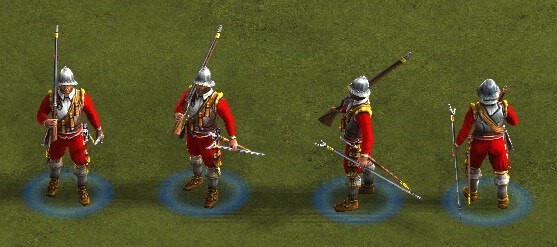
Base stats:
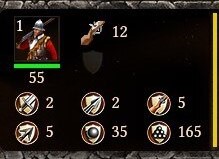
Full upgrades:
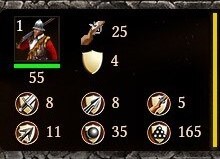
Cost: 35 food, 9 gold, 15 iron
Training time: 6.5 seconds
Range: 15
Reload speed: 5 seconds max: 2.45 seconds min
+ Armored against bullets
+ Benefit from the armor techs at the Blacksmith and Academy
– Very low HP
– Slow training time
– No melee attack
– Slightly below average rate of fire
– Perform similarly to 17c. Musketeers despite costing more and requiring the armor techs to reach their full potential
Despite their cool looks and built-in bullet armor, Austrian Musketeers are easily the worst unique musketeer of the early game. In fact, I’m not even sure if they’re as good as normal 17c. Musketeers since they perform about the same while also requiring the expensive armor techs to reach their full potential. It’s a shame that this is Austria’s only unique unit that replaces a generic one.
Although they max out at a sweet 9 bullet armor (1 more than a 17c. Pikeman), Austrian Musketeers are saddled with a slew of weaknesses ranging from an 0.5-second longer training time to a pitiful 55 HP and a slowed-down rate of fire. The HP decrease is particularly egregious as it makes these helmet and breastplate-wearing infantrymen not actually very tanky. They also cost more gold and iron, both individually and in total. This is in addition to all the usual weaknesses of early musketeers like not having a melee attack.
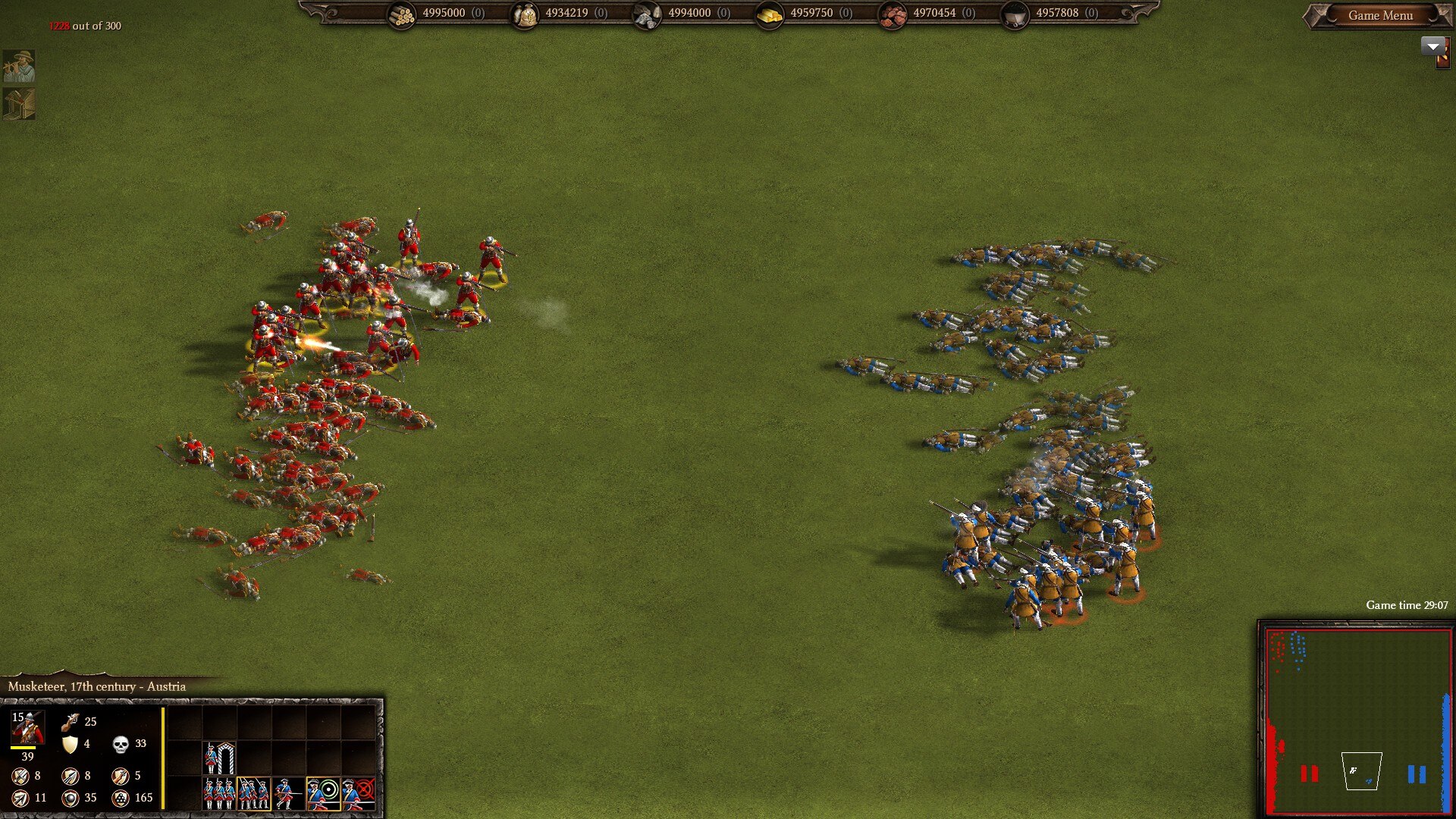
Mediocre: 74 fully-upgraded Austrian Musketeers vs 80 17c. Musketeers. In repeated tests the Austrians usually won but the fight could go either way, which isn’t a ringing endorsement of them considering their much higher overall cost. (These mock battles also favored the Austrians since they assumed their controller had researched both expensive armor techs, something not guaranteed in-game.)
In both tests and games, Austrian Musketeers perform about the same as normal 17c. Musketeers, but they have a higher price tag and are extra expensive to upgrade since they require the two armor techs to reach their full potential. This isn’t even getting into how badly other unique musketeers outperform them. Even Scottish Covenanter Musketeers look good compared to these sad Austrian clowns.
Bottom line: Austrian Musketeers are strong contenders for the worst musketeers of the 17th century. If you like the concept of an early armored shooter, go check out Spain and their unique musketeer. As for Austria…well, thank God for Roundshiers and mercenaries.
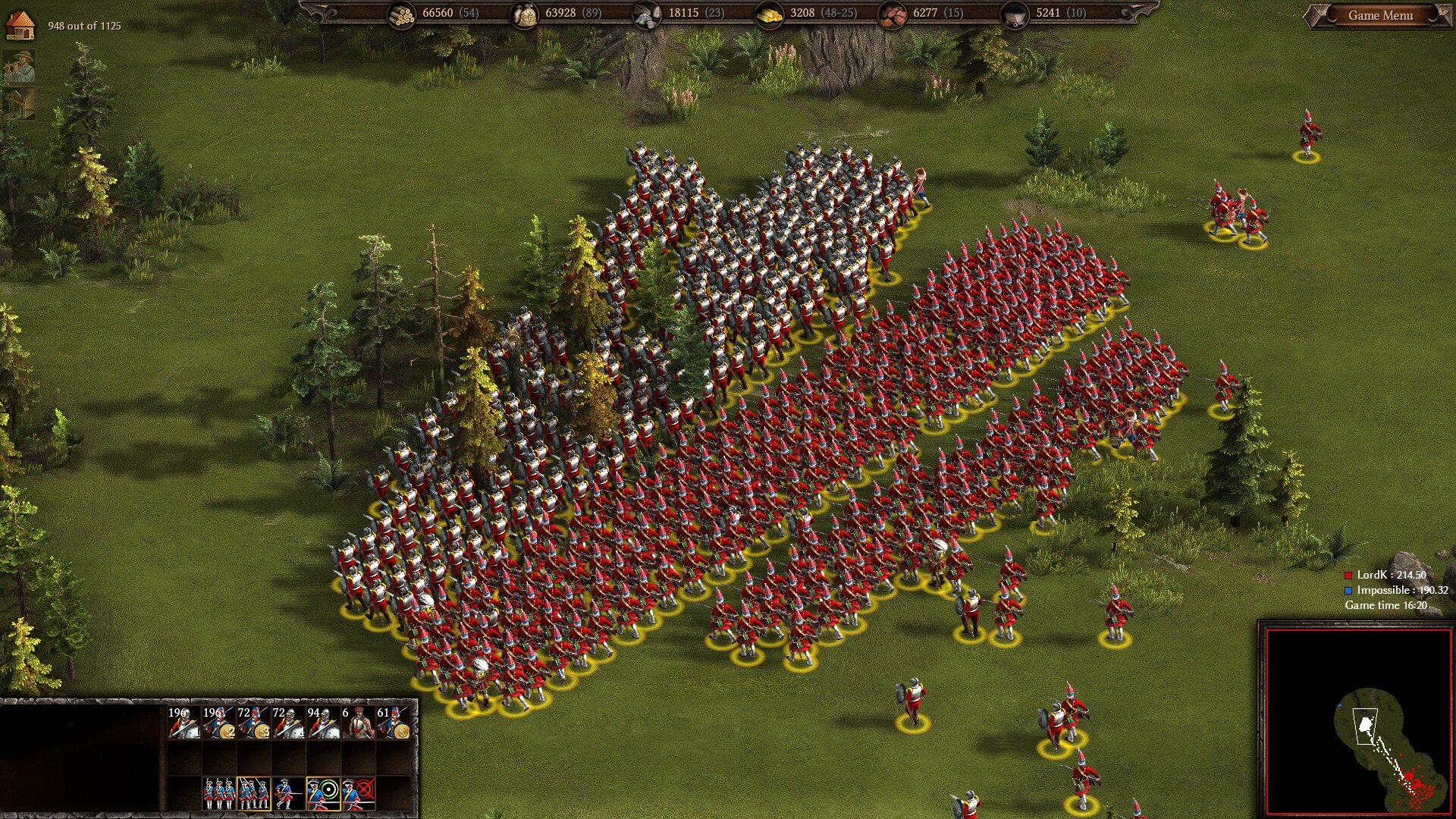
Hired help: A 15-minute peacetime army with Austrian Roundshiers and Mercenary Grenadiers. More on this build later.
Croat (17th century)
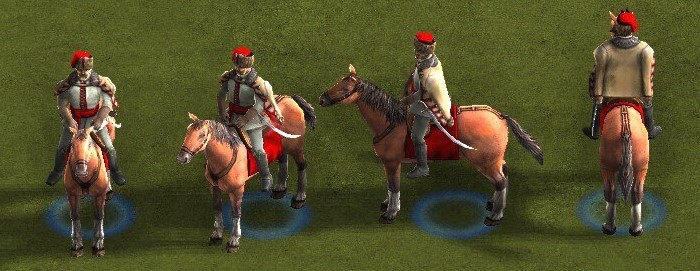
Base stats:
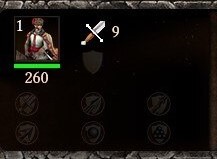
Full upgrades:
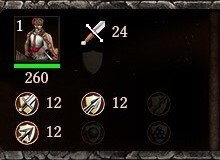
Cost: 80 food, 6 gold, 2 iron
Training time: 15.75 seconds max: 10.5 seconds min.
+ Fast cavalry
+ Available in 17th century
+ Low cost
+ Good HP and melee/arrow armor for fast cavalry
+ Better at tanking bullets than Hussars
~ Deals sword damage
– Low attack for cavalry
– Can’t make formations
– Worse in melee than Hussars
The Croat is one of the stronger fast cavalry units of the 17th century, being effectively a cheaper, slower-training Hussar with better defenses but worse offense. As with other early fast cavalry, they work best in games allowing capturing where they can ride around stealing Peasants and buildings, but their speed, utility, and surprising tankiness can still be valuable in other games.
Compared to other fast cavalry, Croats prioritize defense over offense. Their 24 attack is the lowest of any non-mercenary fast cavalry, but their 260 HP and 2 melee/arrow armor are both above average. They also train pretty quickly for an early fast cavalry unit, only 0.5 seconds slower than a Hussar.
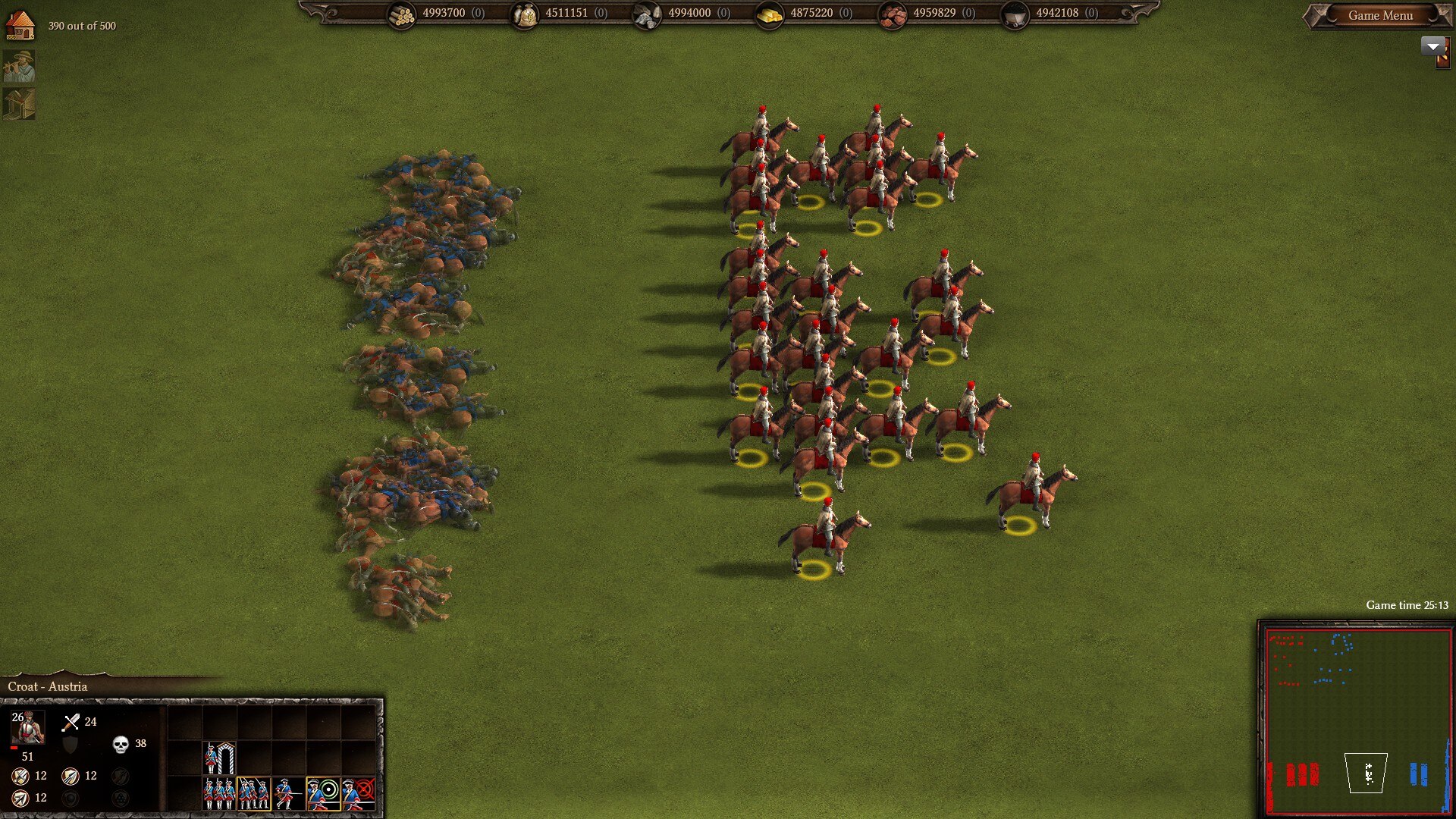
Unexpected Triumph: 69 fully-upgraded Austrian Croats vs 55 Swiss Mounted Jaegers. It’s pretty rare for a 17th century unit to beat an 18th century one on an even playing field; even Winged Hussars couldn’t manage that feat.
Their performance in combat reflects this. While they lose to standard Hussars with equal upgrades and training time, Croats otherwise perform quite well relative to other fast cavalry, beating Swedish Hakapeliitta, Hungarian Hussars, Scottish Raiders, and even Swiss Mounted Jaegers, a unit from the next century. That’s pretty impressive, especially considering Croats can be made earlier and are cheaper both to train and upgrade than the Jaegers.
More surprising to me was how good Croats are as a bullet sponge. Their relatively high HP and quick training time make them even better at soaking up gunfire than normal Hussars, both individually and as a whole:
69 Austrian Croats * 260 HP / 25 damage = 717.6 shots to kill
72 normal Hussars * 230 HP / 25 damage = 662.4 shots to kill
Given how obsessed Austria seems to be with resisting bullets, it’s probably not surprising that even their unarmored cavalry are good at it. That the Croats do it more cheaply than Hussars is just icing on the cake.
In short, Croats are surprisingly good units and I was continuously impressed by them in both tests and games. If you want your fast cavalry to be better in melee, stick with regular Hussars, but if you want to maximize your army’s tankiness (or you’re still in the 17th century), Croats are a fine choice.
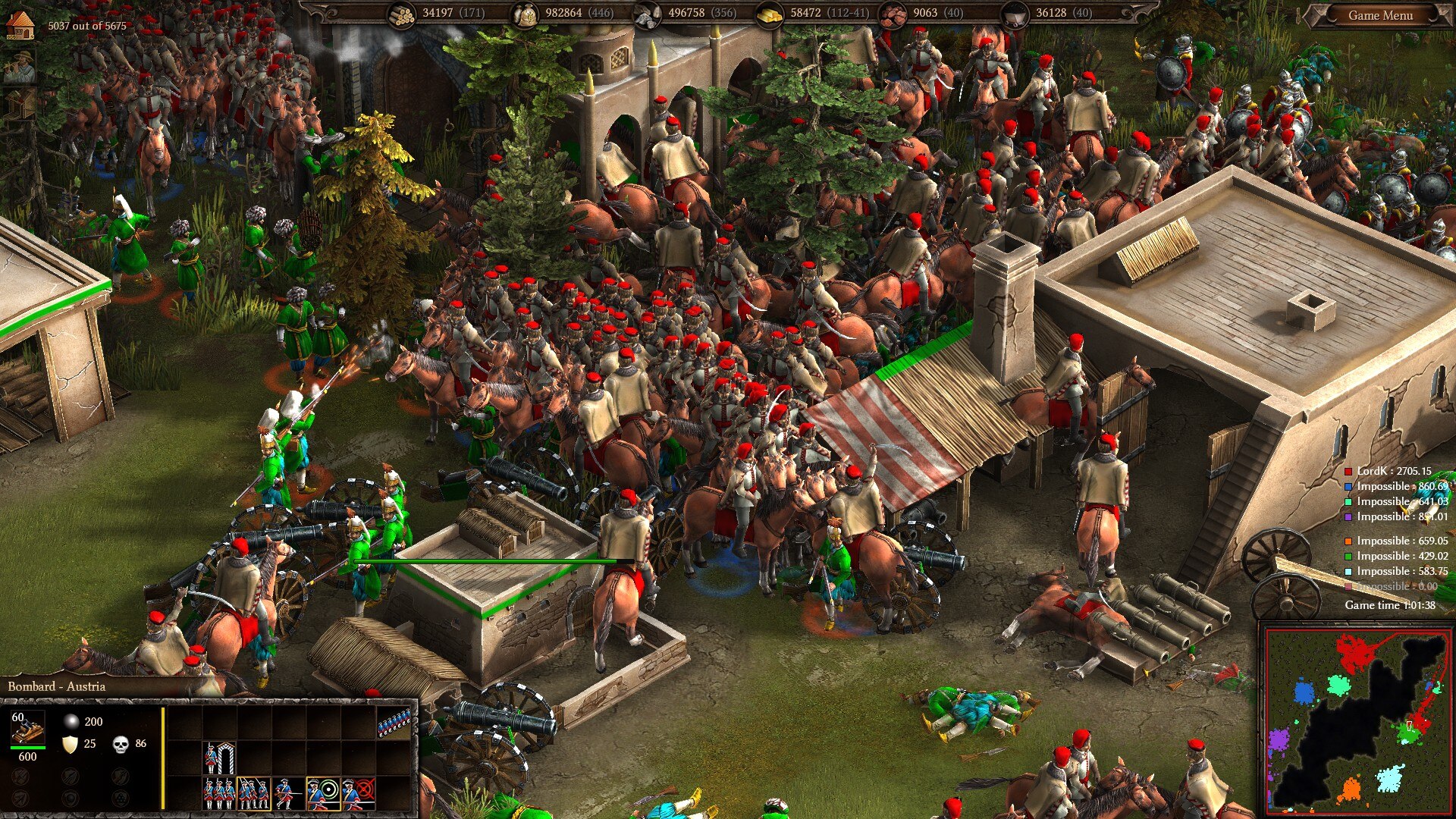
Vengeance for Vienna: Having broken through the Turkish defenses, the Croats run amok in their town.
Pandur (18th century)
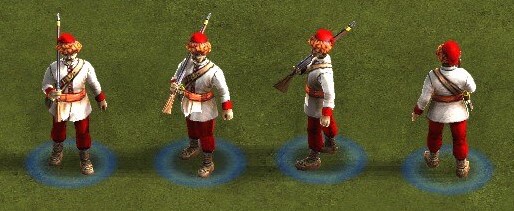
Base stats:

Full upgrades:
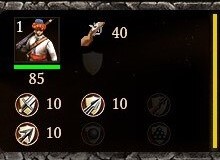
Cost: 40 food, 15 gold, 10 iron max; 40 food, 8 gold, 5 iron min
Training time: 5.5 seconds
Range: 16.88
Reload speed: 4.69 seconds max, 2.3 seconds min
+ Very low cost
+ High ranged damage
+ Faster reload speed than most skirmishers
+ Does well in slow-paced games
~ Same range as 18c. Musketeers
– Slow training time
– No melee attack
– Can be overwhelmed by faster-training musketeers before you get a critical mass of them
The Pandur is an example of what some players call a “skirmisher”–a slow-training, late-game Musketeer that prioritizes ranged damage over all else. Pandurs fit right into this mold and can be a good alternative to the trusty 18c. Musketeer in slower-paced games where you can protect them from cavalry and other melee units.
Like all skirmishers, Pandurs have high ranged damage (40 vs a normal Musketeer’s 25), but they train slowly and their lack of bayonets makes them vulnerable in melee. Unlike French Chasseurs or Hungarian Szekely, however, Pandurs keep the same 16.88 range and 2.3 second rate of fire as an 18c. Musketeer. This forces them to get closer to the enemy than those units, but once in range they can lay down a withering hail of shot.
The biggest downside to the Pandur, as with all skirmishers, is their slow training time. At 5.5 seconds per unit, an Austrian player can only make 87 Pandurs for every 108 18c. Musketeers another European nation makes.
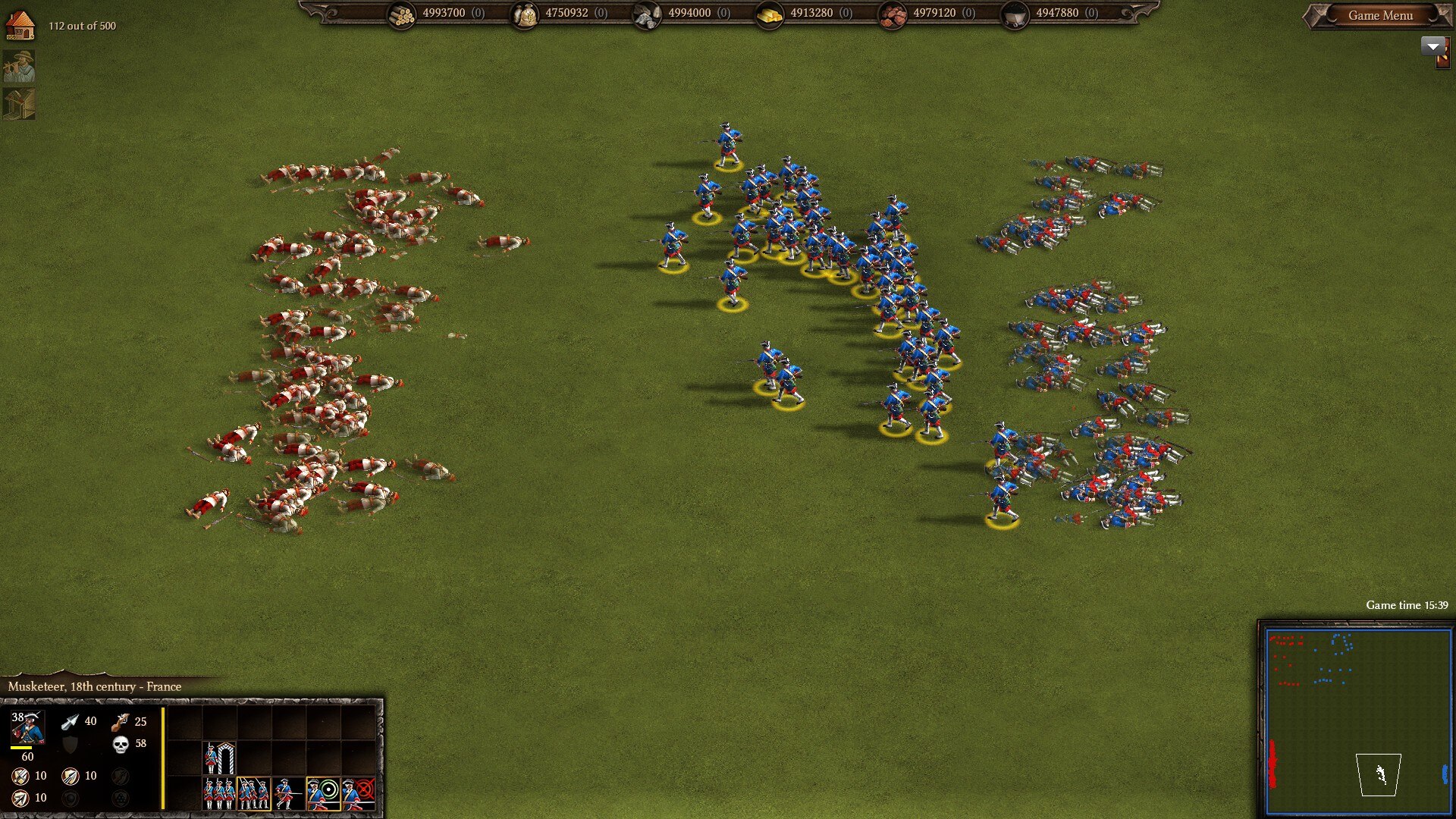
Production speed matters: 87 fully-upgraded Pandurs vs 108 18c. Musketeers.
While Pandurs do very well in large numbers, their slow training time creates an opening in the early 18th century for other European nations to overwhelm them with armies of faster-training musketeers. Portugal, Saxony, Bavaria, and Ukraine are especially good at this, but any country with 18c. Musketeers can be a problem. Against such enemies or if you’re not confident that you can keep your shooters out of melee (like if there’s a Polish player running around with Winged Hussars or something), Austrian players should stick to 18c. Musketeers, who are better suited for such a chaotic and fast-paced environment.
Still, Pandurs can be very good when conditions are right. Their high damage output helps make up for the general offensive weakness of Austria’s other unique units while their low cost means you probably don’t even need the musket cost-reducing tech at the Academy (like you would for 18c. Musketeers). They’re a situational unit to be sure, but in that situation and when properly shielded from danger, they can be quite powerful.

Partition time: Austrian infantry force their way into a Polish base. The Roundshiers (both Austrian and Mercenary) are out front to tank bullets and keep opposing melee troops at bay while the Pandurs do most of the killing.
Gameplay
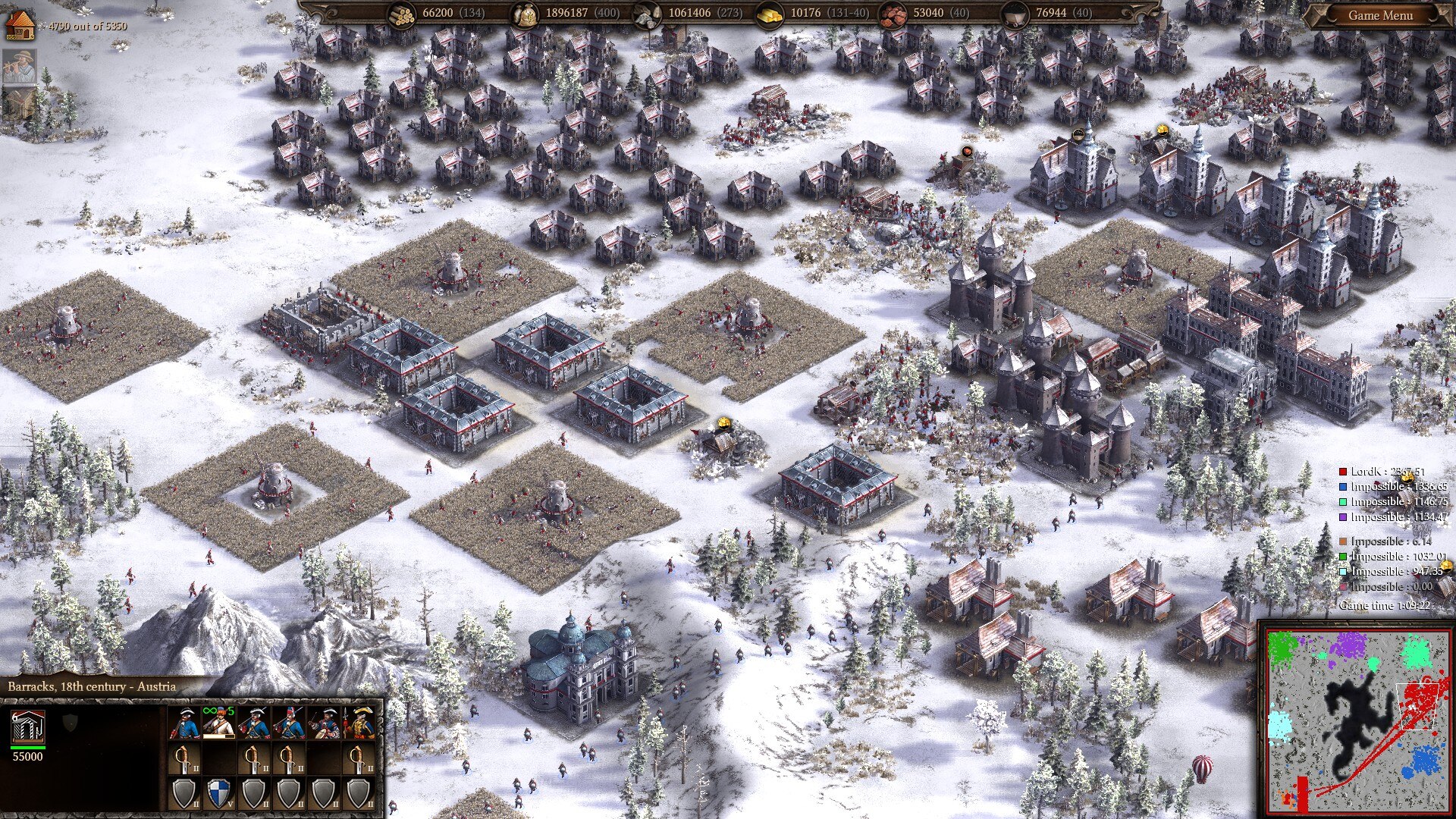
NOTE: This section assumes you’re only playing with Austrian units and buildings. That means it largely ignores capturing, although the advice given can easily be applied to games that allow it.

Beset by Turks, French, and Protestants: An early-game Austrian base.
Austria has an above average early game in low-peacetime games (0-10 minutes). Their fast-building Town Halls give them a small leg economically, while their two melee infantry give them good options. Roundshiers are better for early rushing and late-game bullet-tanking, while 17c. Pikemen are more well-rounded and are the preferred choice for mid-game melee fights. Both are valid options, so pick whichever you prefer.
Longer peacetime games, on the other hand, pose an interesting dilemma. You have three options in such cases: You could stick with Austrian Musketeers and just put up with their mediocrity. Alternatively, you could go for an all-melee build with Austrian and Mercenary Roundshiers together, aiming to quickly overrun your foe’s melee troops before swarming his musketeers. This can be effective at overwhelming small musketeer-based armies early on, although you’re basically screwed if the enemy sees what you’re doing and goes for pikemen instead.
The third option–my personal favorite, and the one I’ve seen used the most in recent online games–is going full mercenary, pairing Austrian Roundshiers with Merc Grenadiers.
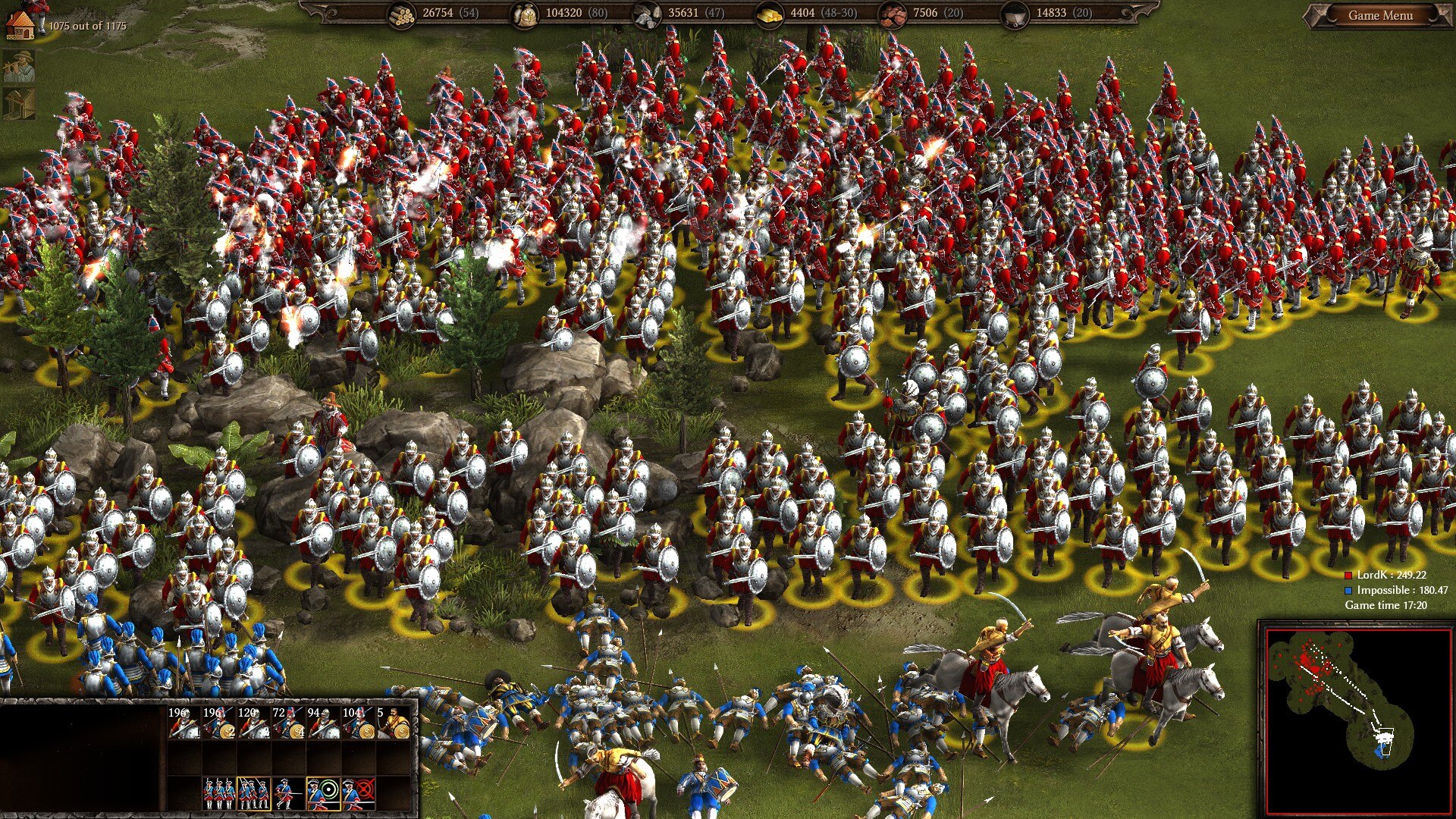
Wallenstein would be proud: A 15-minute peacetime Austrian army with Mercenary Grenadiers, Cossacks, and Austrian Roundshiers. Note the massive gold upkeep at the top.
This strategy isn’t perfect–it costs a lot of gold, plus the Grenadiers have no room for improvement beyond their weak base stats–but their rapid training time allows you to vastly outnumber your opponent’s early musketeers, overwhelming them through sheer volume of shotte. They can also level early buildings very quickly with their grenades, pretty much guaranteeing victory if you fight your way into the enemy’s town. Just make sure you never, ever run out of gold or all those Grenadiers will turn on you faster than you can say “pay in arrears”!
One last unit to mention is the Croat, which is a good option whatever the peacetime. Having native fast cavalry in the 17th century is always nice, especially when they scale so well into the late game. Whether you’re raiding enemy bases or flanking their musketeers in battle, you’ll be glad to have them.
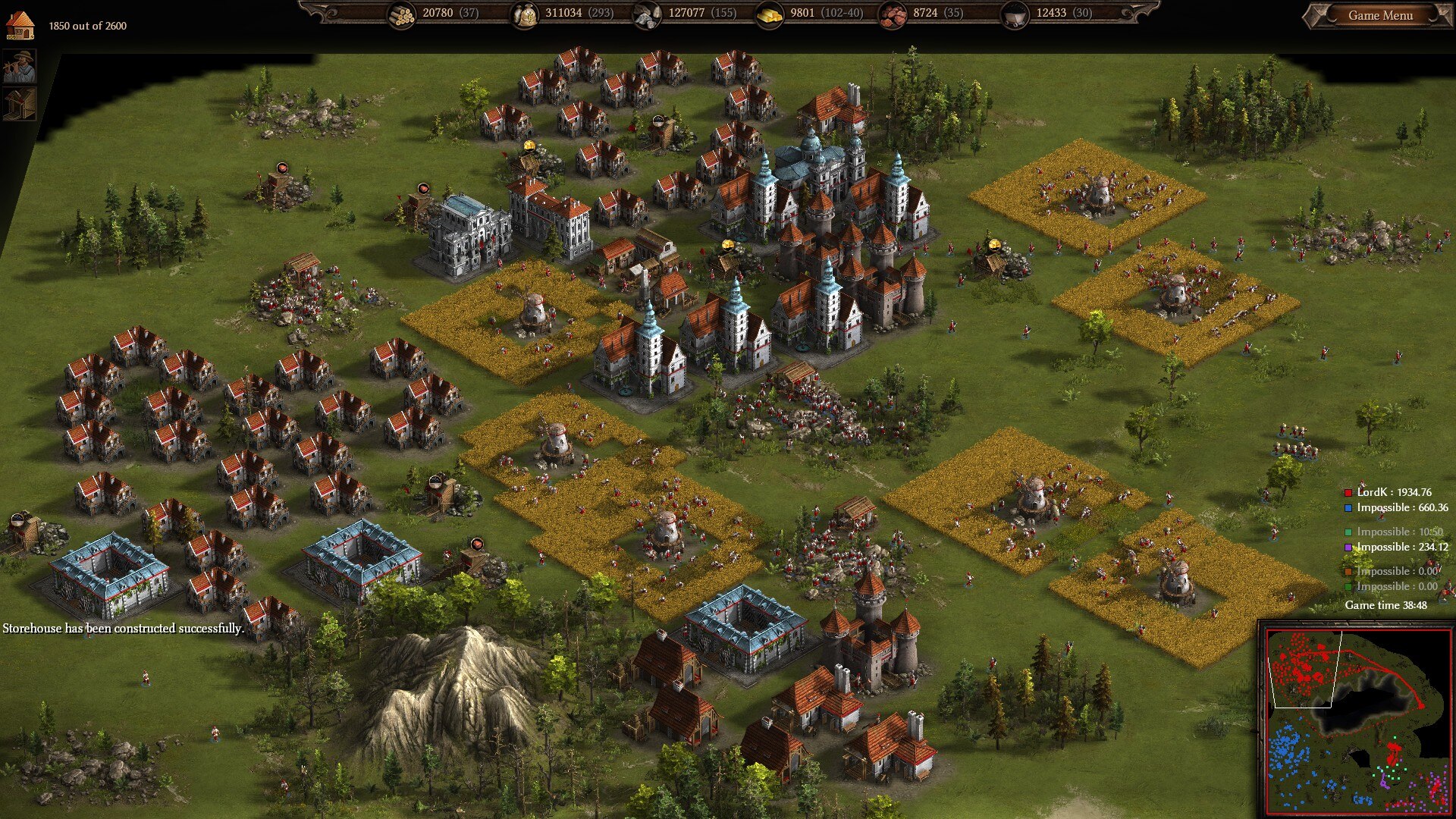
Expansion by marriage and war: A mid-game Austrian base.
At this point most nations have built up their economies and some are starting to reach the 18th century. Armies are getting larger and more powerful, with cavalry and artillery making their presence felt.
How Austria does in this era depends on their unit choices in the early game, though it’s still probably their weakest era regardless (especially if you’re using Roundshiers, whose melee effectiveness has likely dropped off by this point). Adding Mercenary Dragoons or Grenadiers or, better yet, 18th century infantry to your army is a good idea.
Speaking of infantry, once you’ve got your 18c. Barracks up and padded out your army with a few hundred 18c. Pikemen, you’ll have to choose which of Austria’s late-game musketeers you want to use. Standard 18c. Musketeers are always a safe option while Pandurs are cheap specialists best suited for slower games or situations where your team is already ahead, giving you time to build up a sizable force. Both units are good options, though, so just pick whichever one is best suited for your situation.
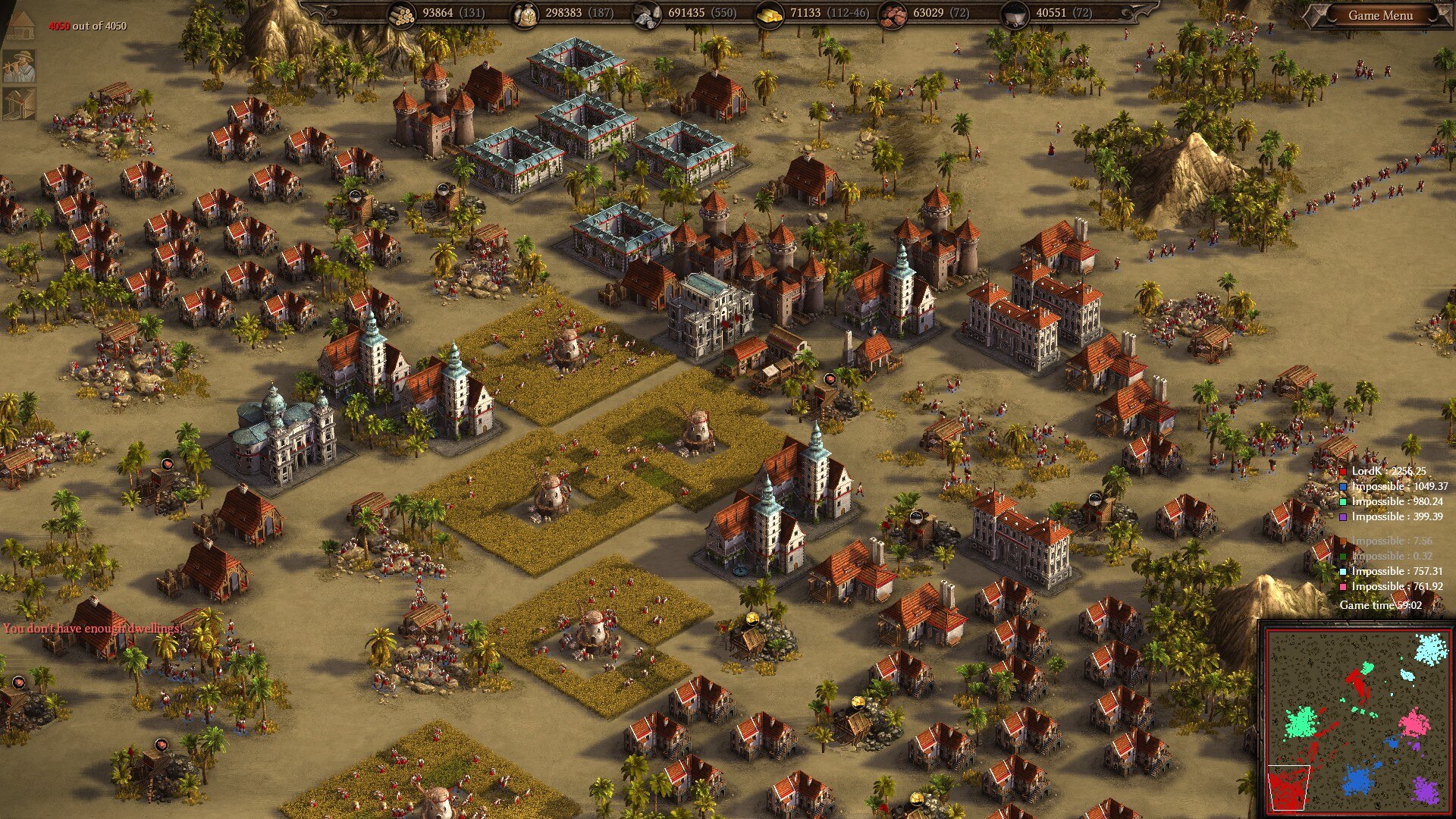
True masters of the Empire: A late-game Austrian base.
By now, nations should have fully developed economies and be fielding large armies of upgraded 18th century units. Any remaining early-game nations will be in trouble while late-game juggernauts like Prussia and Denmark are reaching their zenith.
Austria in this era is anywhere from average to above average depending on their unit composition. Their Roundshiers can make their armies some of the most resistant to gunfire in the entire game, and even the Croats excel in this role compared to other fast cavalry. Combine that with their 18c. Musketeers, Pandurs, and even 18th century cavalry if they so desire, and Austria can put up a credible fight against just about any nation in the late game.
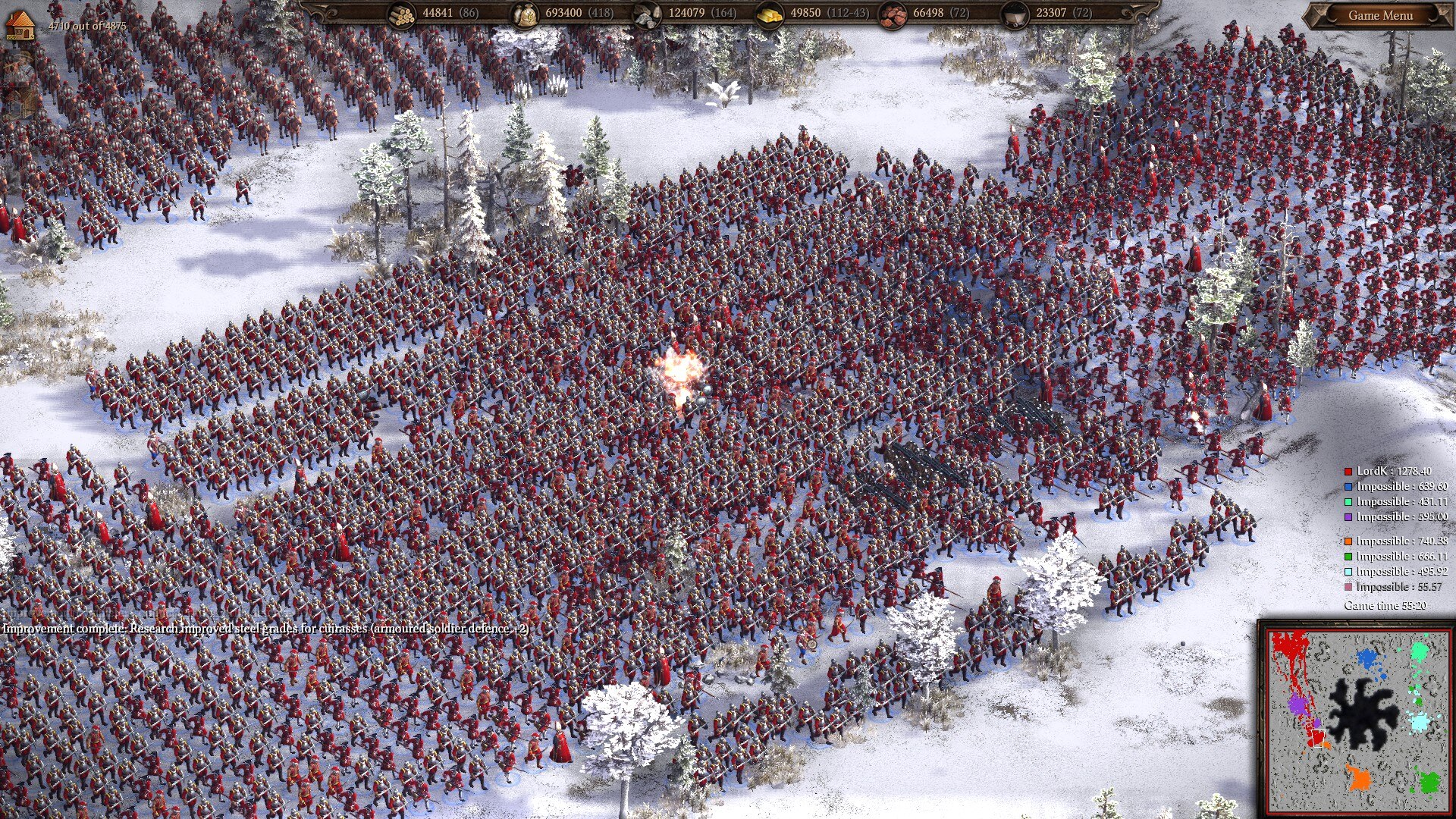
For the Empress Maria: A typical late-game Austrian army of Roundshiers, 18c. Musketeers, Croats, artillery, and mercenaries advances into battle. The choice of 18c. Musketeers over Pandurs allows the army to replenish losses more quickly and gives it better defenses against cavalry (meaning it requires less micromanagement).
Map Preferences
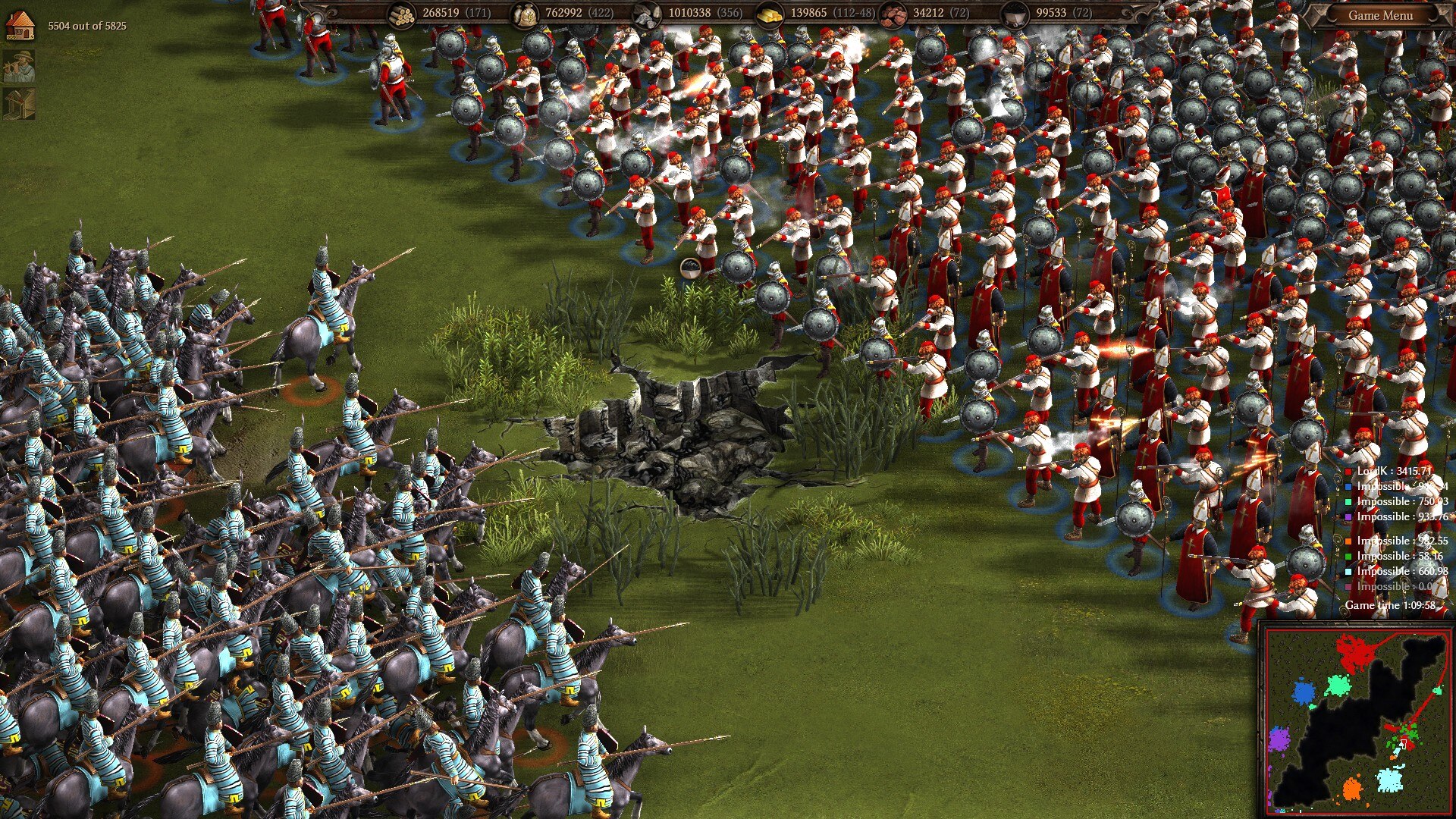
Hold the line: With encouragement from the army’s Priests, Pandurs and Roundshiers stand their ground against a mass Mameluke charge. (This attack actually caught me off guard which is why my Roundshiers aren’t in front of the Pandurs to bodyblock the Mamelukes. It made for a good screenshot, though.)
Being a balanced nation, Austria does well on most map types. This makes them a great pick for games with a high degree of randomness since they can cope well with pretty much any game settings.
Depending on the match parameters, different Austrian units will come to the fore. Their Roundshier rush, for example, works best on small maps with lower peacetimes, allowing them to hit the enemy hard and fast since their troops don’t have to walk so far. By contrast, on larger maps with roundabout routes (like Mediterranean) and longer peacetimes, the Pandur stands out as the slower pace of such games allows you to build up a large force of them in relative safety. (Croats perform well on pretty much any map, so they’re the most flexible of Austria’s unique units.)

Intervening in a Polish civil war: Croats surge into battle in support of an ally. Being able to charge across the map to turn a fight around is just one of the many benefits of fast cavalry.
This flexibility translates well into team games, where Austria can be a valuable asset at every point in the game. Depending on what units they pick, they can be good at any point in the game. They don’t completely dominate in any particular era like some other factions, but they’re always viable at any point in the game, meaning they can tailor their strategy to best support their teammates.
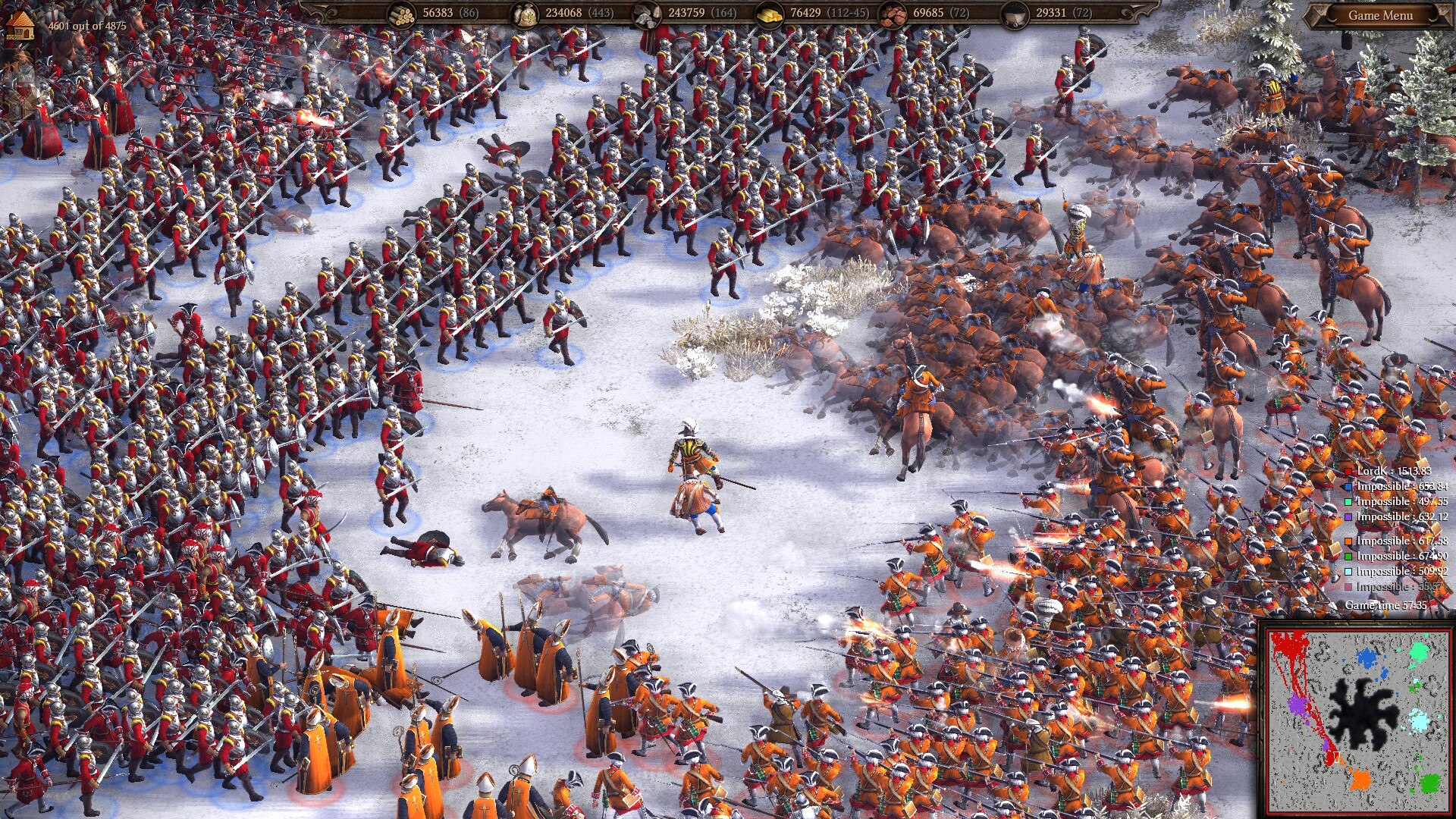
Brining the Swiss to heel at last: At the barked command of their Officers, ranks of Roundshiers bravely advance into battle ahead of their musketeers. Fully upgraded Roundshiers in a formation have 13-14 bullet armor, creating very beefy walking bulwark for your opponents to shoot through.
Tutorials & Example Games
1. The first of two classic guides from top player colorfit. A must-watch for people looking to dive into multiplayer or just get better at the game.
https://youtu.be/XP19ocvOIg0
2. The second colorfit guide, this time covering how to micro your armies in battle. Again, a must-watch.
https://youtu.be/t6JE59Gnesk?list=PL9MM6y8GRIFcfOaVMvUGSZ7s3HANGpEPd
3. A 15-minute peacetime game showing how using Austrian Roundshiers and Mercenary Grenadiers together can be an effective strategy in 15-minute peacetime games. (This was actually where I first got the idea from.)
https://youtu.be/qDjaqkTQLMY
4. Another Grenadier-Roundshier game, but this time an Austrian mirror match.
https://youtu.be/7iGbOPxXHko
Closing Remarks
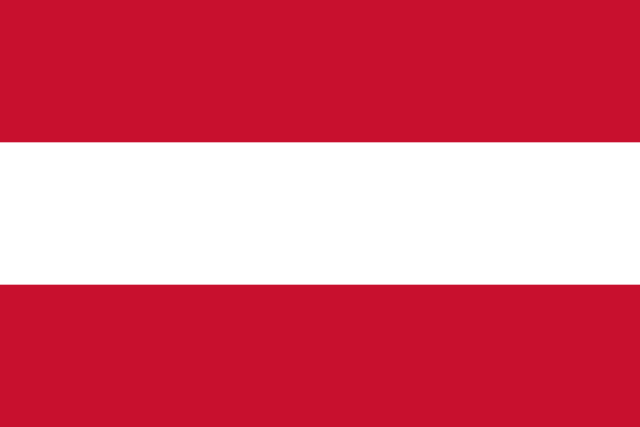
National flag of Austria. The first recorded use of this design goes back to 1230 and it has been flown almost continuously ever since, making it one of the oldest national symbols still in use by a modern country.
That’s Austria! Despite being the default country on the skirmish mode menu, their surprising complexity makes me hesitant to recommend them to newer players. Regardless, they’re one of the more unique European-style nations and I had a lot of fun learning how to play them.
As always, thank you for reading and I hope you found something of use in my work!
Bavaria
England
Netherlands
Piedmont
Poland
Portugal
Prussia
Saxony
Scotland
Spain
And that wraps up our share on Cossacks 3: Austria Faction Guide. If you have any additional insights or tips to contribute, don’t hesitate to drop a comment below. For a more in-depth read, you can refer to the original article here by PirateMike, who deserves all the credit. Happy gaming!
